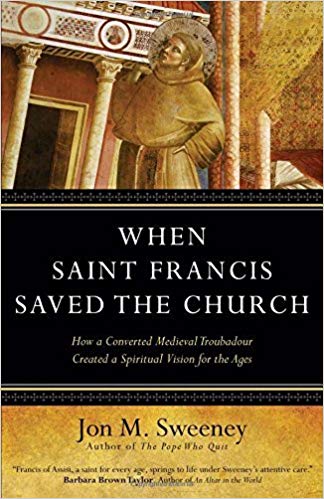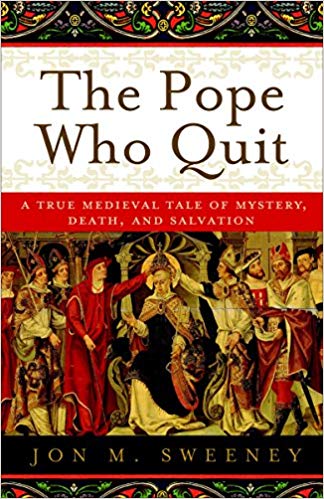|
When Saint Francis Saved the Church: How a Converted Troubadour Created a Spiritual Vision of the Ages
By Jon M. Sweeney Published in September 2014 192 Pages Thibault’s Score: 1/5 After reading The Pope Who Quit by the same author, I decided to give his biography of St. Francis a go. Unlike his biography of Peter of Monroe which just jumps straight into the story, this book is laden down by unnecessary prefaces. Out of the 4 1/2 hour audiobook, the first hour or so is entirely contained of disclaimers. These include warnings such as “This book will overturn what you learned in Sunday school” and “Saint Francis wasn’t perfect.” If there are more than 10 minutes / 4 pages of disclaimers on a book, I generally give it a bad review (unless its a 1000+ page survey of the Middle Ages by Chris Wickham, then its completely respectable). For example, he relates a conversation with someone uninterested in history that he had. If someone is reading the book, then you don’t need to sell them on reading history books. Long disclaimers seem characteristic of pop fiction. I’ve seen many short books where a quarter or half of the book will be nothing but disclaimers. By the second hour, I still didn’t know the basics of who St. Francis was, so decided to stop listening and move on.
1 Comment
The Pope who Quit
By Jon M. Sweeney Published February 2012 304 Pages Thibault’s Score: 3/5 The Pope who quit is a popular history of Pope Celestine V / Peter of Morrone. Peter of Morrone was a Christian hermit monk and mystic who lived a hard and simple life. Because of papal infighting, he was named pope in 1294. He proved to be an incompetent pope, because he was more concerned with his spiritual life than he was the papacy. He only was pope for a few months until he retired, and died 10 months later. I really enjoyed reading about the hard and simple life of medieval hermits. The extreme devotional behavior s shocking - displays of fortitude, pain endurance, and rigor. It is always interesting to learn about the internal politicking and conflicts of the 13th century. I recommend this book to people studying the Middle Ages. It is an interesting case study that neatly intersects with the rest of my research about the period. The Crusades: The Authoritative History of the War for the Holy Land
By Thomas Asbridge Published in March 2011 784 Pages Thibault’s Score: 4/5 This “authoritative history” of the crusades is a fairly extensive historical account of all nine Middle Eastern crusades. I recommend this book, but only to people already interested in the history of the period. The numerous names, events, and details sometimes make it difficult to keep track of who is doing what. That, however, might be something to be expected considering the length and broad scope of the book. There are many interesting details that really surprised me. For example, I already had a vague notion that the crusaders came as disorganized bands of soldiers from a wide variety of factions. I hadn’t realized the extent to which the crusaders operated in the vacuum of a traditional state or government as we understand it today. Constant internal conflicts, rogue mercenaries, and factionalism plagued the crusaders. During sieges, the army was so insubordinate that besieging generals routinely crated incentive systems for soldiers. In one siege, the besieging general paid soldiers 1 coin per stone from the wall they brought back. Asbridge also downplays the role of religious fervor, instead highlighting the wide variety of secular interests motivating both sides. His view contrasts that expressed by Jay Rubenstein in “The Armies of Heaven.” There is a lot of information and mythology about the first, third, and fourth crusades. It is the many other crusades that are less well known. By far, the best thing that this book does, is talk about the other crusades. I had never heard about Louis the 9th’s heroic battles in Egypt, or the cunning Mamluk Bahris. I recommend this book highly to amateur historians, but do not necessarily recommend it as an introduction to the crusades. Armies of Heaven: The First Crusade and the Quest for Heaven
By Jay Rubenstein Published in 2011 424 Pages Thibault’s Score: 4/5 Armies of Heaven is a narrative account of the First Crusade. What is so interesting about this book is that it doesn’t tell the story of the crusade from the perspective of modern historians, instead it tells it from the perspective of someone at the time hearing about it. For example, it just assumes that all reported miracles are accurate. When witnesses report angels and ghosts, Rubenstein does too. Prior to reading this book, I had a vague understanding of the First Crusade. I learned a lot about specific people and details I had never heard of before. I particularly liked the story of Peter Bartholomew, a soldier and follower of Peter the Hermit. Peter Bartholomew has visions, and finds the Holy Lance. After finding it, he becomes an important figure in the crusades. Many begin doubting him, so he decides to subject himself to a trial by fire. He dies 12 days after entering the fire. Because this book is written from such a unique perspective, it gave me many insights into the mindset and ideology of the crusaders. Most crusaders truly believe that the apocalypse was near, and that they were God blessed holy warriors. Even the most seemingly cynical and power hungry crusader lords were forced to play lip service to the Holy War. Although this book is fairly simple, I do not recommend it for the majority of people. It is, however, a must read for anyone interested in the crusades or Medieval history. |
Thibault SerletMost of my articles are book reviews, but I also write about many other topics. Archives
December 2023
Categories |




 RSS Feed
RSS Feed